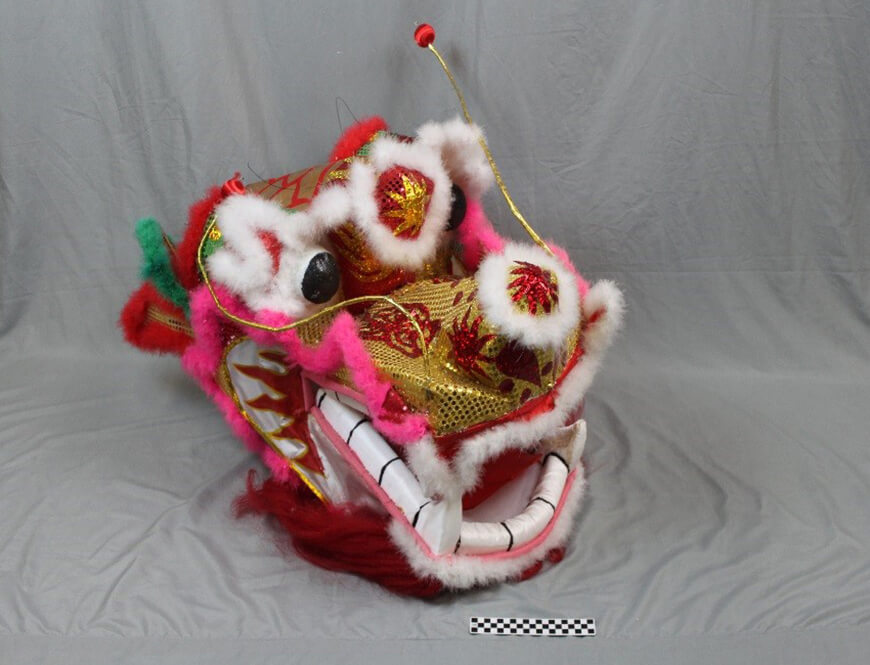Dragons appear in multiple cultures around the world. Though their appearance, meaning and significance varies between cultures, humans remain fascinated with the mythical creature. Western dragons from European myths typically have four legs and large wings. Quetzalcóatl from the Aztec culture is depicted as a double headed serpent without legs or wings. East Asian dragons usually have four legs and no wings, but the number of claws on each foot varies between cultures. Chinese dragons typically have five claws, whereas Korean dragons have four and Japanese dragons have three.
The artifact above was used in the 2007 exhibit, “Here Be Dragons,” at the Institute of Texan Cultures. The the exhibit featured representations of dragons from various cultures. This dragon is specifically styled after the Chinese dragon, but there are similar dragons in Japanese, Korean and Vietnamese cultures.
The exact date of origin for the Chinese dragon is unknown, but the word for dragon, 龙, lóng has been around since the Bronze Age. Dragons are highly revered in Chinese culture and symbolize imperial rule. The creature appears in many works throughout Chinese history: books, poems, paintings, clothing, weapons and statues.
The emperor’s clothing, his consorts’ garments, and the clothes of other court members were often adorned with intricately embroidered dragons. The Emperor himself was sometimes known as the Dragon.
The dragon in Chinese mythology has deep associations with water and was said to bring the rains, storms, floods and typhoons. During autumn, the dragon would descend into water and remain there until spring came, when he ascends back to the sky and brings the rain. Water is the lifeline of humans and is worshiped as a god in many cultures.
Civilizations have built their cities around rivers and other bodies of water for drinking as well as transport. Examples are Mesopotamia and the Tigris and Euphrates, Egypt and the Nile, China and the Yellow and Yangtze rivers, and the list goes on. So it is no wonder why mythical creatures like the dragon water god would be so admired and worshiped. The creature is still a vital symbol and can be seen adorning buildings as art pieces and decorations every year during the New Year festivities all around the world.
The Chinese New Year, also known as the Lunar New Year, follows the Lunar Calendar. The festivities include family gatherings with food, and offerings to honor ancestors. The first new moon begins the new year, and it falls somewhere between late January and early February. The festivities span two weeks, concluding with the Lantern Festival on the first full moon of the year.
Lion and dragon puppets, like this one, are created for parades and other celebrations. They can be made from a variety of materials. This prop uses plastic sequins, cloth and a light wooden frame for the head. Painted cloth and papier-mâché are two other common materials used. A paper dragon along with hundreds to thousands of paper lanterns are used for the Lantern Festival.
The dragon props are part of a dragon dance, orchestrated by a group of people holding the dragon up on sticks. One person leads the dragon using a ball called a dragon teaser. China holds dragon dance competitions every year. In San Antonio, the Institute of Texan Cultures’ annual Asian Festival features a dragon in its opening parade and later performances through the day.
